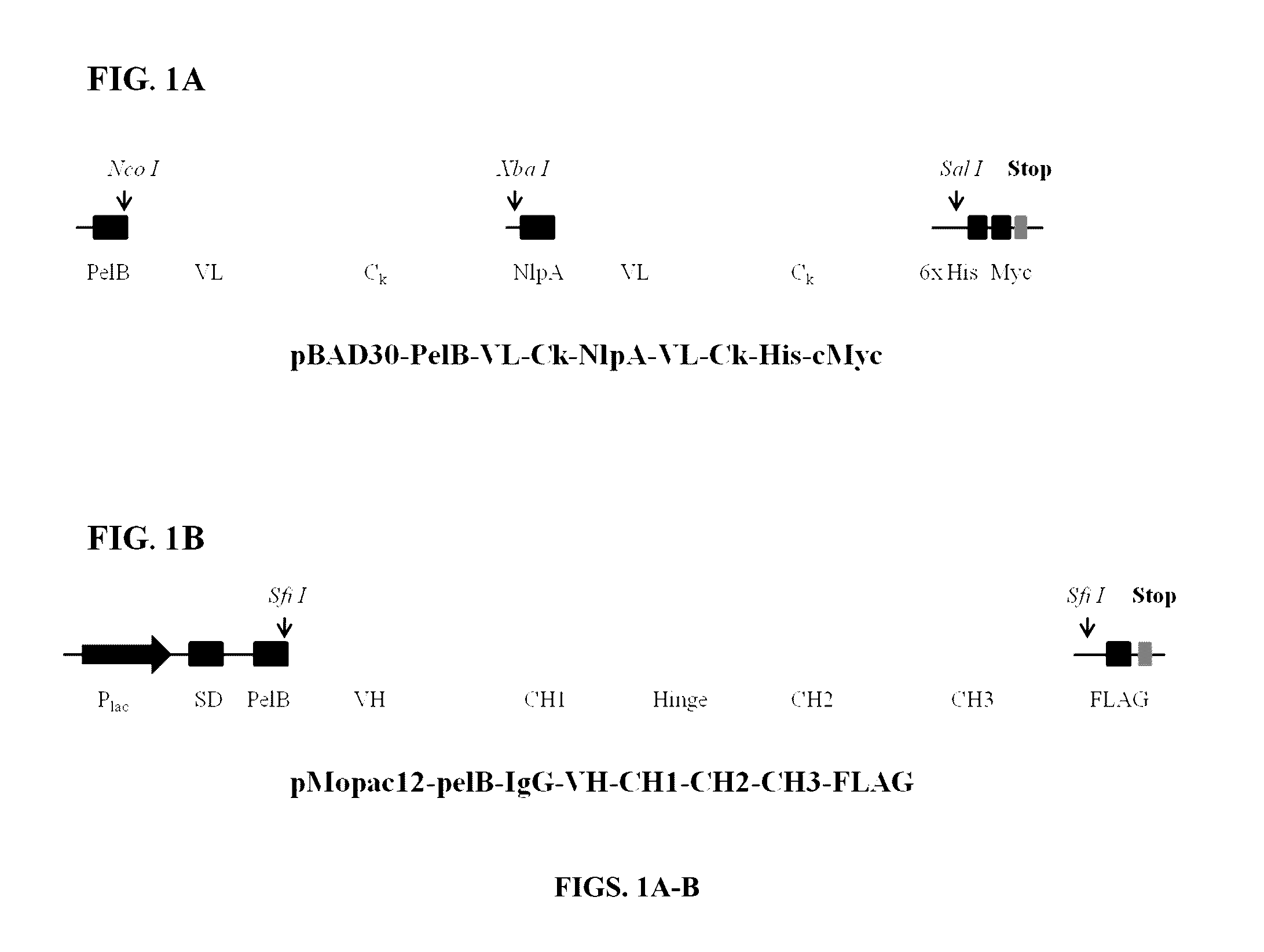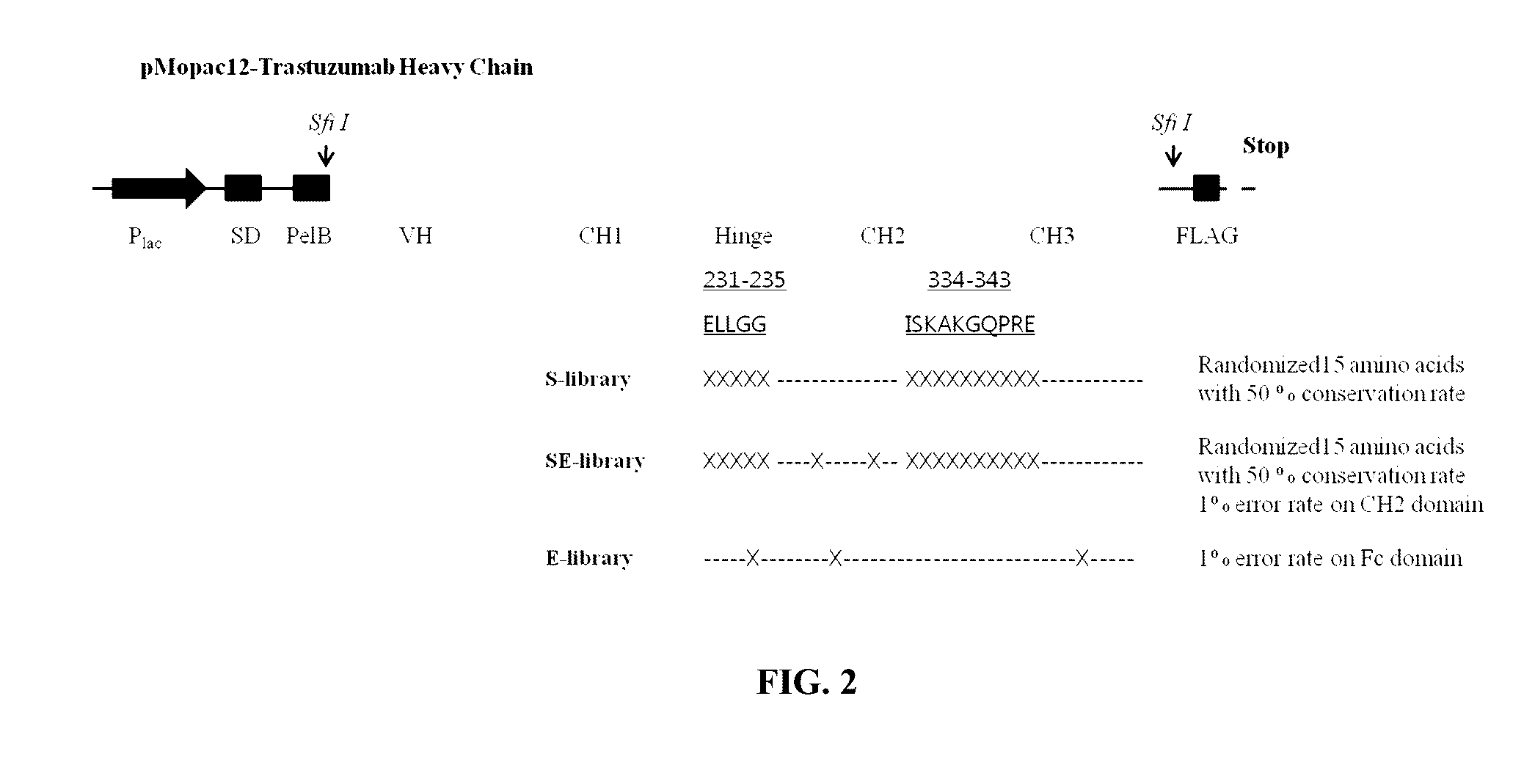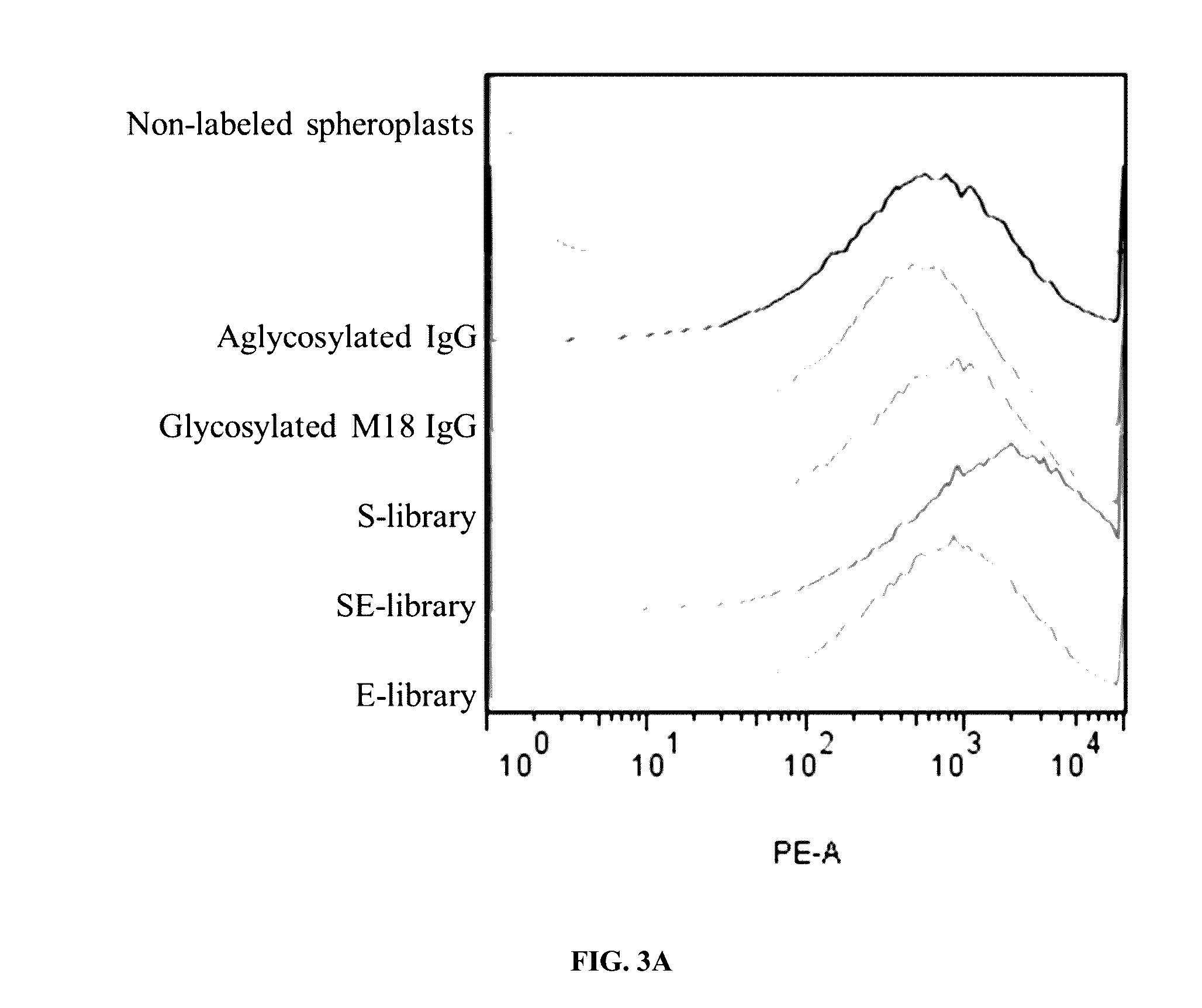Engineered immunoglobulin fc polypeptides displaying improved complement activation
a technology of immunoglobulin and polypeptide, applied in the field of protein engineering, can solve the problems of lack of efficacy and rapid clearance due to patient production of human anti-mouse antibodies (hama), poor mediating of complement activation, time and cost consumption related to the technology, etc., and achieve the effect of strong enhancement of cd
- Summary
- Abstract
- Description
- Claims
- Application Information
AI Technical Summary
Benefits of technology
Problems solved by technology
Method used
Image
Examples
example 1
The Strategy of Libraries for Engineering Fc domain
[0244]E. coli does not encode protein glycosylation machinery and therefore the Fc domains of IgG expressed in the periplasm of E. coli are aglycosylated, lacking the glycan that is normally appended to N297 of the Fc domain. Aglycosylated Fc domains display a greater degree of conformational flexibility that results in highly attenuated or no detectable binding to effector FcγRs (FcγRIA, FcγRIIA, FcγRIIB, FcγRIIc, FcγRIIIA, FcγRIIIB) and Clq (Jefferis et al., 2005; Borrok et al., 2012). To isolate aglycosylated Fc domain variants containing mutations that enable binding to Clq despite the absence of the N297 glycan, three different libraries were constructed. In the first library (S-library), random amino acids were introduced at Glu231, Leu232, Leu233, Gly234, Gly235, Ile334, Ser335, Lys336, Ala337, Lys338, Gly339, Gln340, Pro341, Arg342, and Glu343 using spiked oligonucleotides with codons for conserving wild-type amino acid sequ...
example 2
The Construction of Libraries for Engineering Fc domain
[0245]All plasmids and primers are described in Tables 10 and 11. All primers were synthesized by Integrated DNA Technologies. IgG polypeptides were displayed on the inner membrane of E. coli using two vectors: pBAD30-PelB-VL-Ck-NlpA-VL-Ck-His-cMyc and pMopac12-pelB-IgG-VH-CH1-CH2-CH3-FLAG (Jung et al., 2012) (FIG. 1). In order to construct the S-library, the eight primers (SEQ ID NOs: 24-31) were used (Table 15 and FIG. 2). Two specific primers (PCH017 and PCH020; SEQ ID NOs: 25 and 28, respectively) among the eight primers contain degenerate codons using the spiked oligonucleotides to conserve wild-type amino acids sequences with approximately 50% possibility. The three fragments of the heavy chain gene of IgG1 were amplified with the eight primers and overlapped with PCH016 (SEQ ID NO: 24) and PCH021 (SEQ ID NO: 29) (S-library, Table 15 and FIG. 2). For another sub-library, standard error-prone PCR was employed on CH2 domain ...
example 3
The Preparation of Clq, Dimeric FcγRs, Tetrameric FcγR, and dimeric FcRn
[0246]The Clq protein from human serum was purchased from Abcam. Plasmids for mammalian expression of Fc receptors were constructed as described previously (Jung et al., 2012). FcγRI-His, FcγRIIa-H131-GST, FcγRIIa-R131-GST, FcγRIIb-GST, FcγRIIIa-V158-GST, FcγRIIIa-F158-GST, and FcγRIIIa-V158-Streptavidin (FcγRIIIa-V158-SA), and FcRn-GST were produced by transient transfection of HEK293F cells (Invitrogen) using the pMAZ-IgH (U.S. Pat. No. 8,043,621) derived expression vectors described in Table 16. The transfected HEK293F cells were cultured for 5 days in a 5% CO2 incubator at 37° C. The supernatant was collected by centrifugation at 4,000×g for 10 min and filtered by 0.22 μm polyethersulfone (PES) membrane filter (PALL). The FcγRI-His was purified with Ni-NTA (GE Healthcare) affinity columns according to the manufacturer's instructions. The Fc receptors-GST fusion proteins were purified with Glutathione Sepharo...
PUM
| Property | Measurement | Unit |
|---|---|---|
| pH | aaaaa | aaaaa |
| equilibrium dissociation constant | aaaaa | aaaaa |
| sub-physiological temperature | aaaaa | aaaaa |
Abstract
Description
Claims
Application Information
 Login to View More
Login to View More - R&D
- Intellectual Property
- Life Sciences
- Materials
- Tech Scout
- Unparalleled Data Quality
- Higher Quality Content
- 60% Fewer Hallucinations
Browse by: Latest US Patents, China's latest patents, Technical Efficacy Thesaurus, Application Domain, Technology Topic, Popular Technical Reports.
© 2025 PatSnap. All rights reserved.Legal|Privacy policy|Modern Slavery Act Transparency Statement|Sitemap|About US| Contact US: help@patsnap.com



